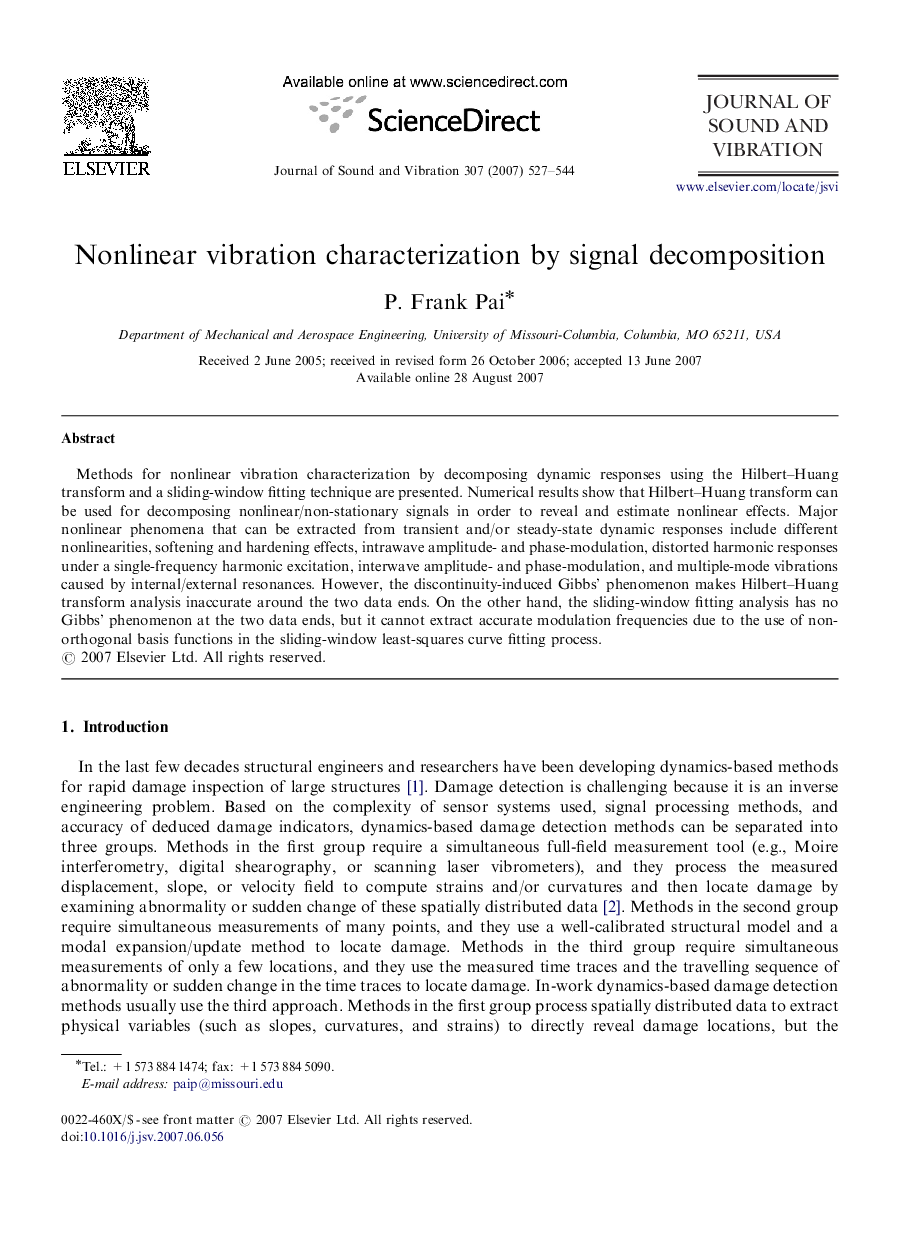| Article ID | Journal | Published Year | Pages | File Type |
|---|---|---|---|---|
| 291913 | Journal of Sound and Vibration | 2007 | 18 Pages |
Methods for nonlinear vibration characterization by decomposing dynamic responses using the Hilbert–Huang transform and a sliding-window fitting technique are presented. Numerical results show that Hilbert–Huang transform can be used for decomposing nonlinear/non-stationary signals in order to reveal and estimate nonlinear effects. Major nonlinear phenomena that can be extracted from transient and/or steady-state dynamic responses include different nonlinearities, softening and hardening effects, intrawave amplitude- and phase-modulation, distorted harmonic responses under a single-frequency harmonic excitation, interwave amplitude- and phase-modulation, and multiple-mode vibrations caused by internal/external resonances. However, the discontinuity-induced Gibbs’ phenomenon makes Hilbert–Huang transform analysis inaccurate around the two data ends. On the other hand, the sliding-window fitting analysis has no Gibbs’ phenomenon at the two data ends, but it cannot extract accurate modulation frequencies due to the use of non-orthogonal basis functions in the sliding-window least-squares curve fitting process.
